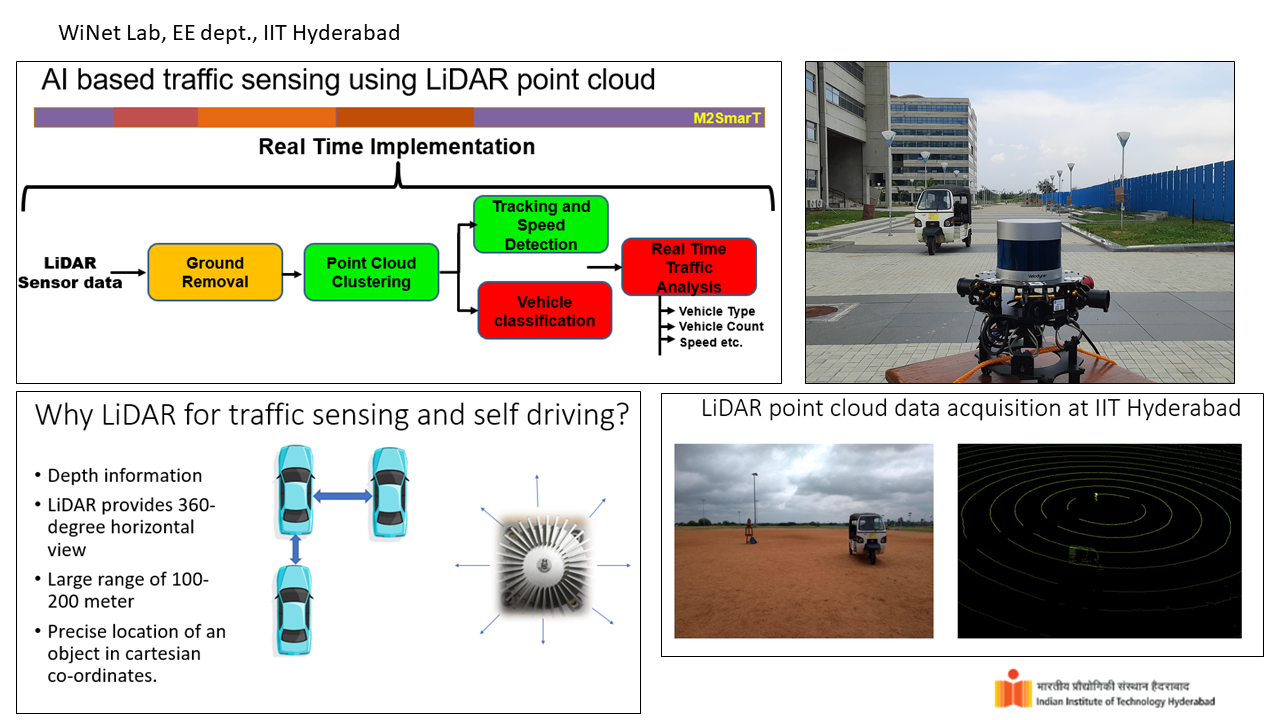D Bhaskar Anand: PhD Student
- Home

- People

- PhD Research Scholar

- Bhaskar Anand
- Home
- People
- PhD Research Scholar
- Bhaskar Anand




Bhaskar Anand
PhD Research Scholar
Joined: Jul 2018
Wireless Networks (WiNeT) Lab
Department of Electrical Engineering,
Indian Institute of Technology Hyderabad
Kandi,Sangareddy,Telangana -502285
Email: :ee18resch11006@iith.ac.in
Research Interest:
Point cloud processing, Signal processing, Image Processing, Aerial LiDAR data acquisition and processing
Technical Skills:
Robot operating system (ROS), C++, MATLAB, Python
Research Work: AI-based Traffic Sensing using LiDAR Point Cloud
Abstract:
Poor traffic management often leads to problems like gridlocks, accidents, longer commutes and high level of air pollution. In order to enhance traffic rule, it is important to sense the real time traffic information. The traffic information includes vehicle count, vehicle type, speed etc. LiDAR is a promissing solution for better traffic sensing because of following advantages: (a) 360 degree horizontal field of view (b) Ability to sense depth information (c) ability to give precise location of objects as cartesian Co-ordinates (d) large range of 100-200 meter. The research plan is as follows (i) LiDAR data acquisition (including transmission and compression) (ii) Pre-processing (iii) Ground point removal (iv) Object Segmentation (Clustering) (v) Classification in to real objects (cars, pedestrian etc. ) (vi)Speed detection (vii) Real time implementation using edge computing device (viii) Optimizing run time.

Conference Papers
- B. Anand, V. Barsaiyan, M. Senapati and P. Rajalakshmi, "Real Time LiDAR Point Cloud Compression and Transmission for Intelligent Transportation System," 2019 IEEE 89th Vehicular Technology Conference (VTC2019-Spring), Kuala Lumpur, Malaysia, 2019, pp. 1-5. doi: 10.1109/VTCSpring.2019.8746417
- A. Josyula, B. Anand and P. Rajalakshmi, "Fast Object Segmentation Pipeline for Point Clouds Using Robot Operating System," 2019 IEEE 5th World Forum on Internet of Things (WF-IoT), Limerick, Ireland, 2019, pp. 915-919. DOI: 10.1109/WF-IoT.2019.8767255

